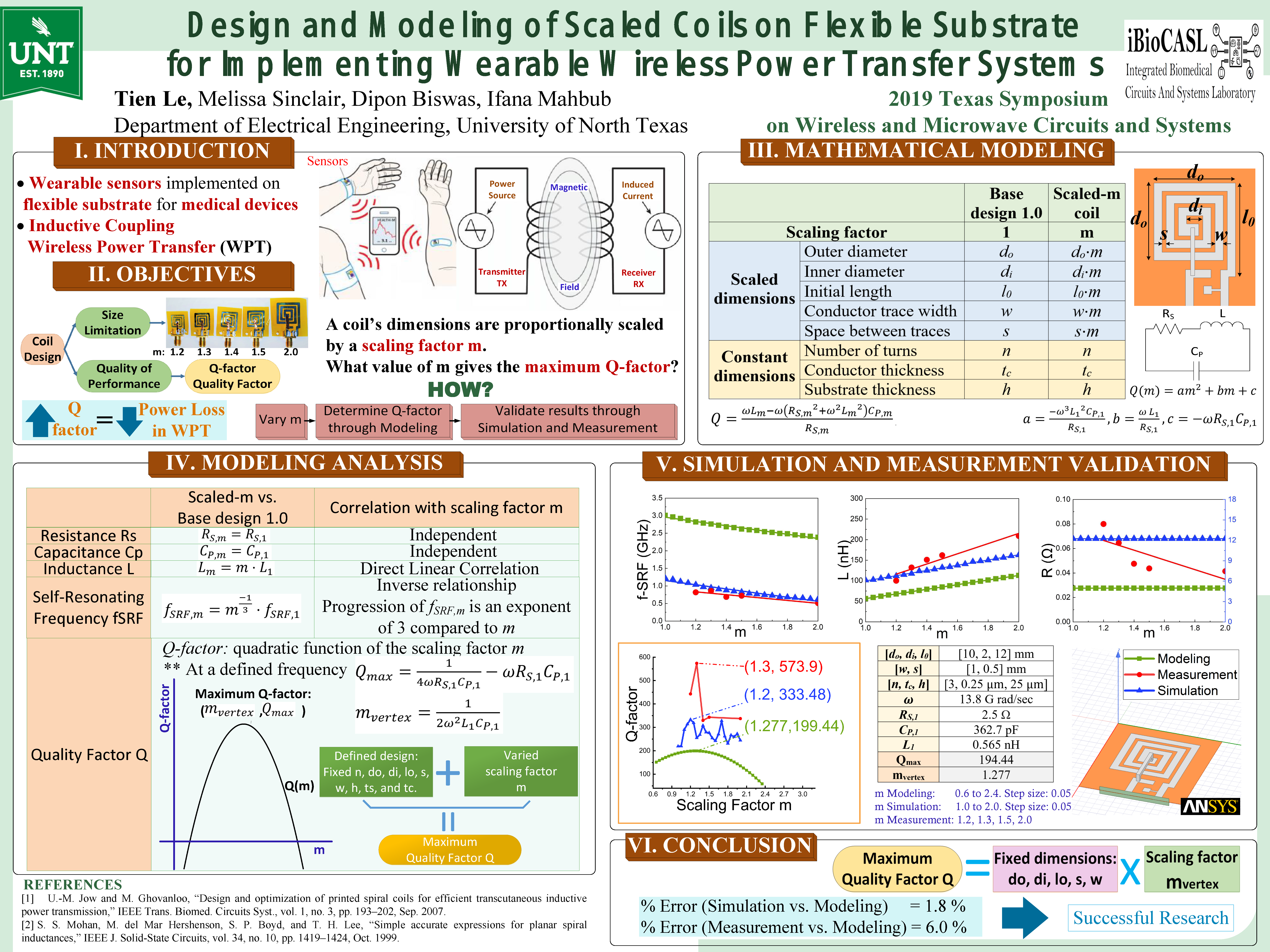First Name:
Ho Thuy TienLast Name:
LeMentor:
Ifana MahbubAbstract:
Wearable sensors, such as electrocardiogram (ECG), electroencephalograms (EEG), and blood pressure sensors, have been a topic of interest for medical monitoring. Without the need of using tethering wires, these wearable sensors can be wirelessly powered using Wireless Power Transfer (WPT) systems, whose basic principle is the transmission of electromagnetic fields between two coils. The efficiency of the WPT systems can be measured by the quality factor (Q factor) of the resonant coils, in which, the higher the Q factor, the less power is lost during the power transmission between the coils. The Q factor of a coil can be characterized by the coil’s properties, such as the inductance L, parasitic capacitance C, resistance R, and self-resonance frequency f.
In the fast-developing world where convenience and efficiency are prioritized, wearable sensors are demanded to be size-efficient (the smaller, the better) and to be able to transfer power productively (high Q factor). Therefore, it is crucial to design coils with reasonable sizing to be used on human bodies but also provide a high Q factor. This poster presents the analyzation on twenty samples of silver, square-shaped, spiral coils printed on flexible Kapton substrate, which share the same design but different dimensions that are proportionally scaled by a scaling factor m varied from 1.0 to 2.0 with a step size of 0.1. Through mathematical modeling, simulation, and measurement, the correlation between the scaling factor and the coils’ L, C, R, f, and Q factor are found, and the design with the scaling factor that gives the highest Q factor can be determined. Our results show that the coils’ resistance and parasitic capacitance are independent of the scaling factor while the inductance shows a directly linear relationship. Meanwhile, the self-resonating frequency shows an inverse correlation with the scaling factor, in which the progression of f is an exponent of 3 compared to m. The Q factor is found to be a quadratic function of the scaling factor m whose shape is an open-downward parabola, and the maximum Q factor is the point corresponded to the vertex of the function. This indicates that, for a fixed coil design, it is possible achieve the maximum Q factor by scaling the coil’s dimensions proportionally with an appropriate scaling factor.Poster:





